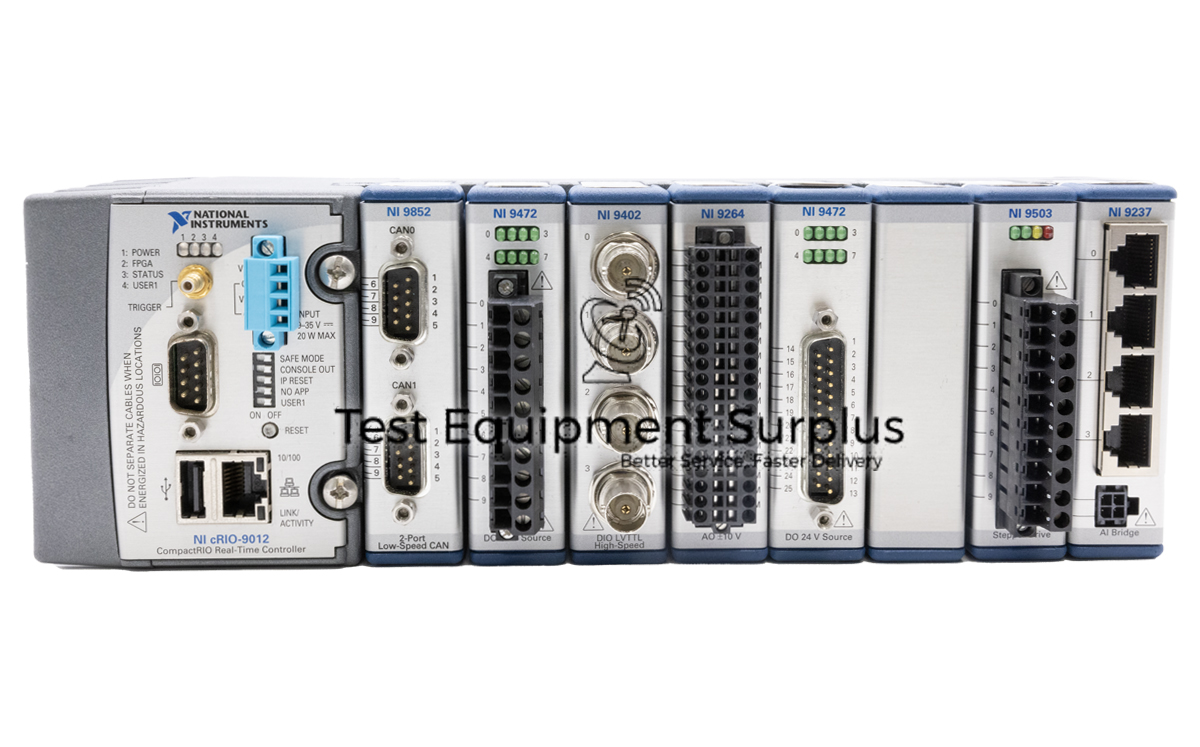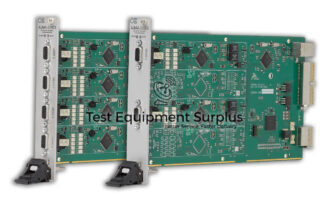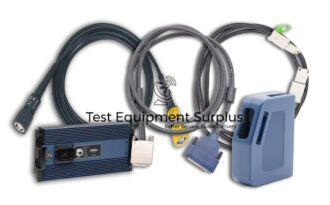Description
The National Instruments cRIO-9148 CompactRIO Chassis, with Part Number 781502-01, is designed to provide flexible I/O Scan Times, which are dependent on the type and number of C Series Modules used. Utilizing scanned access mode for I/O operations is significantly faster compared to direct access mode, though the latter permits asynchronous access to I/O channels, offering flexibility in data handling.
When it comes to optimizing system performance, it is important to note that the configured publishing of data can greatly impact CPU overhead, making it a critical factor for efficient application design. In Active Scan Engine mode, the system establishes a connection with the DeviceNet interface device, enabling communication and data transfer to DeviceNet slave devices. Conversely, switching to Configuration Scan Engine mode results in the disconnection of the DeviceNet interface device from the network, ceasing all network communication.
| Specification | Details |
|---|---|
| Part Number | 781502-01 |
| Product | National Instruments cRIO-9148 CompactRIO Chassis |
| I/O Scan Time | Depends on type and number of C Series Modules |
| I/O Access Mode | Scanned access mode is faster than direct access mode |
| Direct Access Mode | Allows asynchronous access to I/O channels |
| CPU Usage Factor | Configured publishing of data can significantly affect CPU overhead |
| Scan Engine Mode – Active | Connects DeviceNet interface device to the network and writes data to DeviceNet slave devices |
| Scan Engine Mode – Configuration | Disconnects DeviceNet interface device from the network |
Question 1: How does the choice between scanned access mode and direct access mode on the National Instruments cRIO-9148 Chassis affect the asynchronous access to I/O channels and the overall system performance in terms of data handling flexibility?
Answer 1: Choosing scanned access mode on the National Instruments cRIO-9148 Chassis offers faster I/O operations, while direct access mode allows asynchronous access to I/O channels, providing greater flexibility in data handling but potentially impacting overall system performance due to increased CPU overhead.
Question 2: What are the effects of choosing between scanned access mode and direct access mode on the I/O operations when using the National Instruments cRIO-9148 CompactRIO Chassis?
Answer 2: Choosing between scanned access mode and direct access mode on the I/O operations when using the National Instruments cRIO-9148 CompactRIO Chassis affects the speed and flexibility of data handling; scanned access mode offers faster I/O operations, while direct access mode allows for asynchronous access to I/O channels.
Question 3: How does the use of scanned access mode in the National Instruments cRIO-9148 CompactRIO Chassis compare with direct access mode in terms of speed and I/O channel access flexibility?
Answer 3: The use of scanned access mode in the National Instruments cRIO-9148 CompactRIO Chassis is faster than direct access mode, but direct access mode offers asynchronous access to I/O channels, which provides greater flexibility in data handling.
Question 4: How does utilizing scanned access mode for I/O operations on the National Instruments cRIO-9148 CompactRIO Chassis compare to using direct access mode in terms of speed and data handling flexibility?
Answer 4: Utilizing scanned access mode for I/O operations on the National Instruments cRIO-9148 CompactRIO Chassis is faster than using direct access mode, although direct access mode offers asynchronous access to I/O channels, thus providing greater flexibility in data handling.
Question 5: How does using scanned access mode for I/O operations on the National Instruments cRIO-9148 CompactRIO Chassis compare to using direct access mode in terms of speed and flexibility?
Answer 5: Using scanned access mode for I/O operations on the National Instruments cRIO-9148 CompactRIO Chassis is significantly faster than using direct access mode, though direct access mode offers the advantage of asynchronous access to I/O channels, which provides greater flexibility in data handling.




